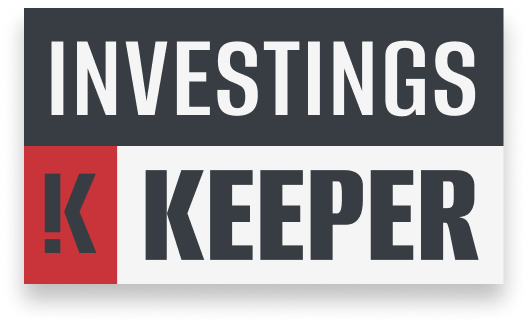
One recent study shows that 64% of American adults are living paycheck to paycheck with no meaningful savings or investments. As a result, millions of people are at a significant disadvantage and are unable to achieve their most important goals.
Some people may think they’re either too young or too inexperienced to invest, or they think they don’t have enough cash to get started.
The reality is that anyone can start investing as quickly as possible, regardless of age, experience, and wealth. The right investment plan can help you meet your current and future goals faster, so you can start to build wealth for yourself. This guide provides all the basic information beginner investors need to get started.
Tips for Beginner Investors
In simplified terms, investing is the process of acquiring assets and other investments to save money and build wealth over time. However, becoming a successful investor requires more than just purchasing assets. It requires a complete investment strategy that meets your personal and financial goals. When creating this strategy, there are several things you should keep in mind, including:
Your Personal and Financial Goals
You can’t develop an investment strategy without first setting personal and financial goals, such as buying a home, paying college tuition, or preparing for retirement. Setting clear goals can help you decide how much money to invest, whether you should choose short-term or long-term investments, and what your ultimate investment objectives are.
Your Position as an Investor
It’s important to determine what type of investor you are. For example, are you prepared to make high-risk investments, or are you looking for a more conservative approach? Your risk tolerance refers to your ability to withstand losses when your investments perform poorly. Risk tolerance is critical to constructing an appropriate portfolio. Risk tolerance must encompass a combination of both tolerance and objectives.
Diversification of Assets
You may be a beginner investor, but it won’t take you long to realize you can’t put all your eggs in one basket. In other words, good strategies include a variety of investment types. That way, if one investment drops in value, you’ll have other assets to help pull you back up.
Read More: Beginner’s Guide to Portfolio Diversification
The Costs Involved
As with most things in life, investing isn’t free. There are a variety of costs associated with many types of investments, such as mutual fund loads, annual or custodian fees, commissions, and brokerage fees. Before embarking on any new investment, be sure you understand all the costs involved. You should also make sure you understand any tax implications that may affect your tax liability now or in the future.
Common Investments for Beginners
There are many types of investments. Here are common ways to save and invest for those just starting out.
High-Yielding Savings Accounts
If you have money sitting in a savings account at your local bank, there’s a good chance you’re receiving little to no interest on that money. This means you’re allowing the bank to hold your money with no benefit to you.
You can earn interest rates that are about 10 times higher by transferring the money to a high-yield savings account. These accounts are often found at online banks, rather than brick-and-mortar financial institutions.
HYSAs aren’t technically investments, but they can be a great tool to earn interest on cash you want to keep on hand. (For instance, you can stash your emergency fund in a HYSA with 3-6 months of basic expenses.)
Some banks may have minimum balance requirements and charge fees for accounts that go under this amount. For that reason, be sure to compare different online banks to find the right cash account for your needs.
Certificates of Deposit
Certificates of deposit, commonly referred to as CDs, are specialized savings accounts that hold a set amount of money, over a set period, for a predetermined interest rate. CDs can be sold on 6-month, 1-year, 5-year, or longer terms. At the end of the term, you receive all your money back, in addition to all interest accrued during the term.
While purchasing CDs is a low-risk savings option, you can be penalized for withdrawing money earlier than the predetermined date. Additionally, interest rates can fluctuate significantly while your money sits in the account. Make sure that you fully understand the terms of the CD before purchasing.
Bonds
Bonds can be a great option for investors who are just starting out. In their simplest terms, they’re sort of like an IOU, where you provide companies, governments, and other entities with money. They, in turn, invest this money in their organizations, and at set timeframes, the borrower pays interest and then returns the money.
For example, let’s say you purchased a $5,000 bond with a 5% coupon rate and a 10-year term. You would receive an annual interest payment of $250 for 10 years, at which time the borrower returns your initial payment of $5,000.
Risks associated with bonds depend on the credit worthiness of the borrower. Treasury and municipal bonds are often the least risky bonds available, as are corporate bonds from reputable, long-standing companies.
401k Investing
If your workplace offers a 401k option, you should consider taking advantage of this opportunity, especially if your employer matches your investment. A 401k plan is a company-sponsored investment plan that employees typically use for retirement. However, there are special circumstances where you can pull money out of this account prior to retirement.
A 401k plan works by allowing your employer to take a set percentage or amount out of your regular paycheck. In many cases, employers match this amount up to a set amount. For example, if you request to have 2% taken out of your check each week for a 401k plan, your employer also contributes 2% of your pay. You, in turn, can choose from a variety of investment options. You also have the option to make pretax contributions, which allows you to defer any tax liability until retirement.
ETFs
ETFs, also known as exchange index funds, are an option for pooling different stocks and bonds. ETFs combine investors’ money to make larger investments. They are purchased, traded, and sold on a stock exchange. These funds are traded throughout the day, and the ETFs value fluctuates. ETFs are also typically more affordable and require a lower initial investment to purchase than other pooled options, like mutual funds.
Index Funds
Index funds track market indexes, such as the S&P 500 and the Dow Jones Industrial Average. Just as with ETFs, index funds work by combining money from numerous investors to make larger investments. The benefit of index funds for beginners is that they typically require a lower initial investment level. In fact, beginners can invest in index funds for as little as $100. This can be a great option for investors who don’t have a lot of money to start their investment strategy.
Cryptocurrency
Cryptocurrency is one of the newer investment options, and it tends to be highly volatile. Unlike standard money, which is regulated by a central authority, cryptocurrency is secured through blockchain technology. There are several ways to invest in cryptocurrency. You can purchase cryptocurrency, invest in cryptocurrency companies, or invest in an ETF that focuses on cryptocurrency investments.
All these investment options fall into several categories. They’re either long-term or short-term investments, and they’re either high-risk or low-risk investment options. Understanding these differences can help you pick the right investment opportunities for your goals.
Long-Term vs Short-Term Investments
Most investment options are broken down into either long-term or short-term investments. Short-term investments are often defined as investments you hold for 1 year or less.
Long-term investments, on the other hand, are investments you hold for more than 1 year, such as mutual funds, 401k accounts, and bonds. Some investments, such as stocks, can fall into either category, depending on your specific investment plan. While both investment options can help you grow your wealth, long-term investments are usually better suited for building generational wealth that you can pass down to your loved ones.
High-Risk vs Low-Risk Investments
As you might imagine, high-risk investments come with a higher potential for losing money, while low-risk investments are typically safer. However, if you invest well, high-risk investments have the potential to offer greater profits. Many financial planners recommend beginner investors start with low-risk investment opportunities, such as bonds, CDs, and high-yielding savings accounts, until they have more experience.
How Much Should a Beginner Start Investing?
One of the biggest misconceptions about investing is that you need a lot of money to start. This concept couldn’t be further from the truth. With so many investment opportunities available, you can start an investment plan with very little money.
Is $100 Enough to Start Investing?
Yes, you absolutely can start investing for as little as $100. It’s not about how much money you have to start investing. The important thing is that you start the process. You might have to start small, but you can continually adjust your investment strategy as your wealth begins to grow over time. If you stick with it, you’ll have the chance to grow an investment portfolio that enables you to reach your future goals.
How Do I Start Investing with Little Money?
If you’re worried that you don’t have enough money to start investing, start small. You can start an investment portfolio with what you have now.
Build an Emergency Fund: One of the first steps you can take toward building a strong financial situation is to set up an emergency fund. If you haven’t done so already, consider starting to save today. This fund can help you financially in the unexpected hard times, such as an illness or the loss of a job. Think about storing this rainy-day fund in a high-yield savings account to earn higher interest rates.
Participate in a 401k Plan: If you aren’t currently investing in a 401k or similar retirement account, consider starting soon. This is especially true if your company matches a percentage of your investment. Even if you can only save 1%-2% of your paycheck, it’s typically better to start now than to wait.
Meet With a Financial Advisor: If you’re new to investing, consider meeting with a financial advisor or take advantage of the many online investment resources available. This step can provide you with invaluable information about building a long-term investment plan and prevent you from making any common mistakes.
Our Take
Are you looking to build an investment strategy to help you meet your financial goals? Our free online financial planning tools can help you get started. Check out our free financial tools.



